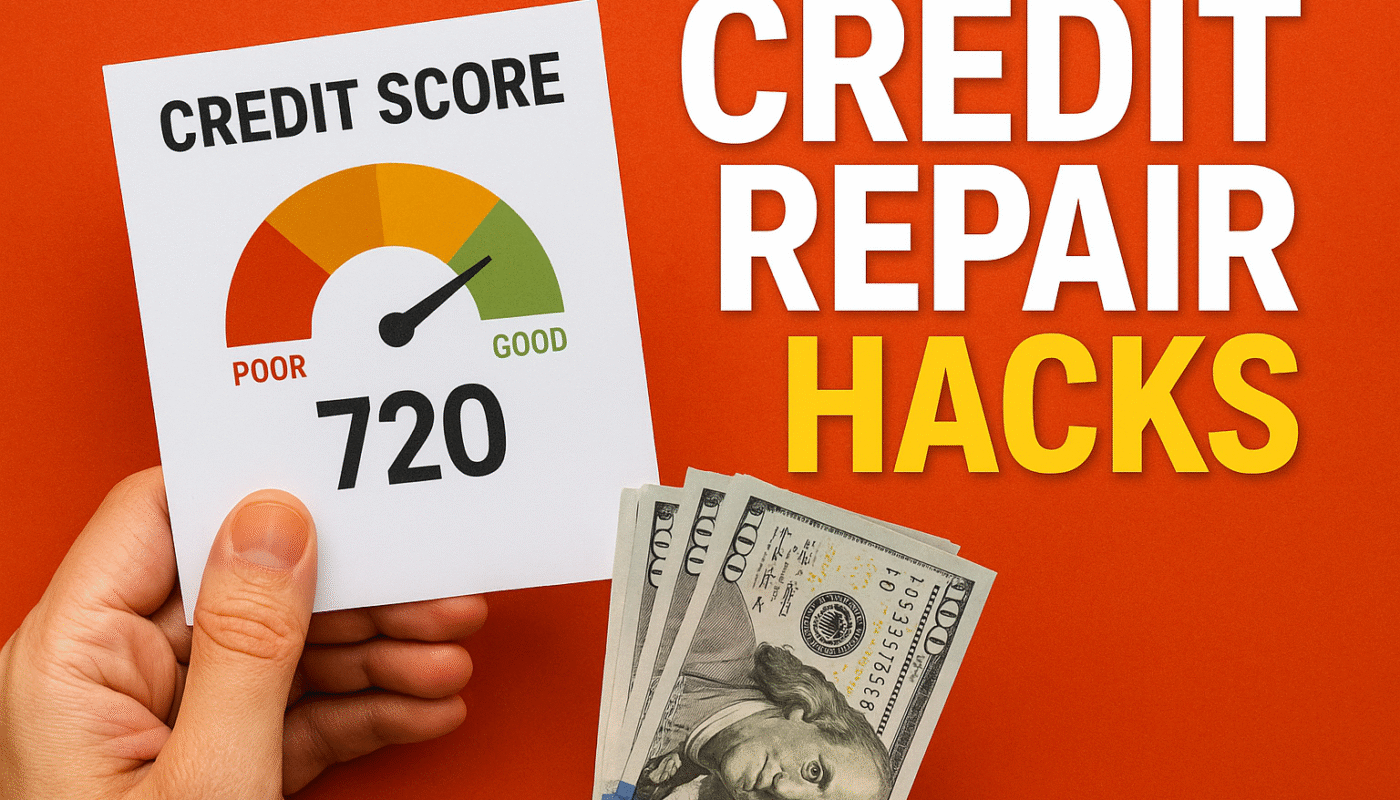If you’ve ever been denied a loan, struggled to get approved for a credit card, or faced sky-high interest rates, you know how frustrating a bad credit score can be. The good news? You can repair your credit — and it doesn’t have to take years.
In this guide, I’ll walk you through practical, step-by-step credit repair hacks that actually work. No scams. No “overnight miracles.” Just proven strategies to boost your credit score and regain financial control.
Why Your Credit Score Matters
Your credit score isn’t just a number — it’s your financial passport. Banks, lenders, landlords, and even employers look at it to decide if they can trust you with money.
A higher score means:
- Easier approval for loans and credit cards
- Lower interest rates
- Better chances of getting approved for apartments
- Potentially lower insurance premiums
In short, fixing your credit isn’t optional. It’s essential.
1. Check Your Credit Report — For Free
Before you start repairing your credit, you need to know what’s wrong.
Go to AnnualCreditReport.com — the only official site authorized by federal law — and request free copies of your reports from Equifax, Experian, and TransUnion.
Look out for:
- Late payments
- Collection accounts
- Charge-offs
- Hard inquiries
- Identity theft or errors
> Pro Tip: Over 30% of credit reports have mistakes that hurt scores. Fixing just one error can instantly boost your score.
2. Dispute Errors Immediately
Found an error? Dispute it. Under the Fair Credit Reporting Act (FCRA), credit bureaus must investigate inaccuracies.
Here’s what to do:
- Write a dispute letter to the credit bureau.
- Include proof — bank statements, emails, or payment receipts.
- Wait up to 30 days for investigation.
You can dispute online:
Experian Dispute Center
Equifax Disputes
TransUnion Dispute Page
A successful dispute can wipe negative marks from your report and boost your score fast.
3. Pay Down Credit Card Balances 💳
Your credit utilization ratio — how much of your available credit you’re using — makes up 30% of your score.
Rule of thumb:
> Keep your credit usage below 30% — ideally under 10%.
Example:
If your credit limit is $5,000
Don’t carry a balance above $1,500
Quick Hack:
Pay down balances before the statement date, not just the due date.
Ask for a credit limit increase (but don’t spend it).
Lower utilization = higher score.
4. Negotiate “Pay for Delete” Deals 🤝
If you have collections on your report, you can sometimes negotiate with debt collectors to remove the account after payment.
Steps:
- Contact the collection agency.
- Offer to pay the balance (or a settlement amount).
- Request a written agreement stating they’ll delete the account.
This doesn’t always work, but when it does, it’s a game-changer.
5. Become an Authorized User
One of the fastest hacks? Piggybacking on someone else’s good credit.
If a family member or close friend has a credit card with:
- A long positive history
- Low utilization
- No late payments
Ask them to add you as an authorized user. Their good behavior reflects on your report — sometimes boosting your score by 50+ points instantly.
6. Use “Goodwill Letters”
If you’ve had one-off late payments, write a goodwill letter to your lender explaining why it happened and requesting removal.
Keep it short and polite. Example:
> “I’ve been a loyal customer for years and made an honest mistake due to a temporary hardship. I’d greatly appreciate it if you could remove the late mark.”
Surprisingly, many lenders say yes.
7. Use Secured Credit Cards to Rebuild
If your score is very low or you’ve been denied regular cards, get a secured credit card.
How it works:
You deposit a refundable security deposit (e.g., $300)
That becomes your credit limit
Use it responsibly and pay in full
Over time, secured cards report positive history and help you graduate to unsecured cards.
Top Secured Cards to Consider:
- Discover It Secured
- Capital One Secured Mastercard
8. Avoid Closing Old Accounts 🚫
A big part of your credit score is the length of your credit history. Closing old accounts can lower your average age and hurt your score.
Instead:
- Keep old cards open (even if unused)
- Use them once in a while for small purchases
- Pay them off immediately
This keeps your history alive and boosts your score long-term.
9. Automate Payments to Avoid Late Fees
Payment history makes up 35% of your credit score. Even one missed payment can tank your score.
Set up automatic payments for:
- Credit cards
- Loans
- Utilities
No more late fees. No more damage to your report.
10. Consider Professional Credit Repair (Carefully)
If your credit issues are complex, a reputable credit repair company can help dispute errors and negotiate with creditors.
However, beware of scams:
Avoid companies promising “instant 800 credit scores”
Check reviews and BBB ratings
Make sure they comply with the Credit Repair Organizations Act (CROA)
Recommended services:
Lexington Law
Credit Saint
Final Thoughts: Start Today, See Results Sooner 🚀
Repairing your credit isn’t a quick fix, but with these hacks, you can see noticeable improvements in as little as 30–90 days.
Here’s the roadmap:
- Check and dispute errors
- Pay down balances
- Negotiate with collectors
- Build new positive credit history
Remember: Consistency is key. Every positive step compounds into a stronger credit profile.
Key Takeaways
- Check your reports regularly for errors
- Keep utilization low (<30%)
- Dispute inaccuracies and negotiate deletions
- Use secured cards and authorized users to rebuild
- Pay on time — always

